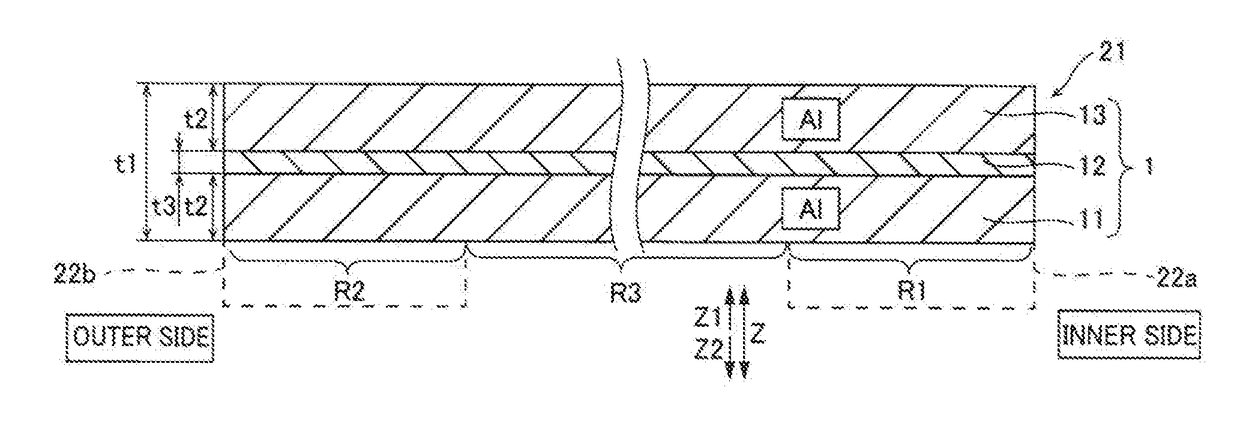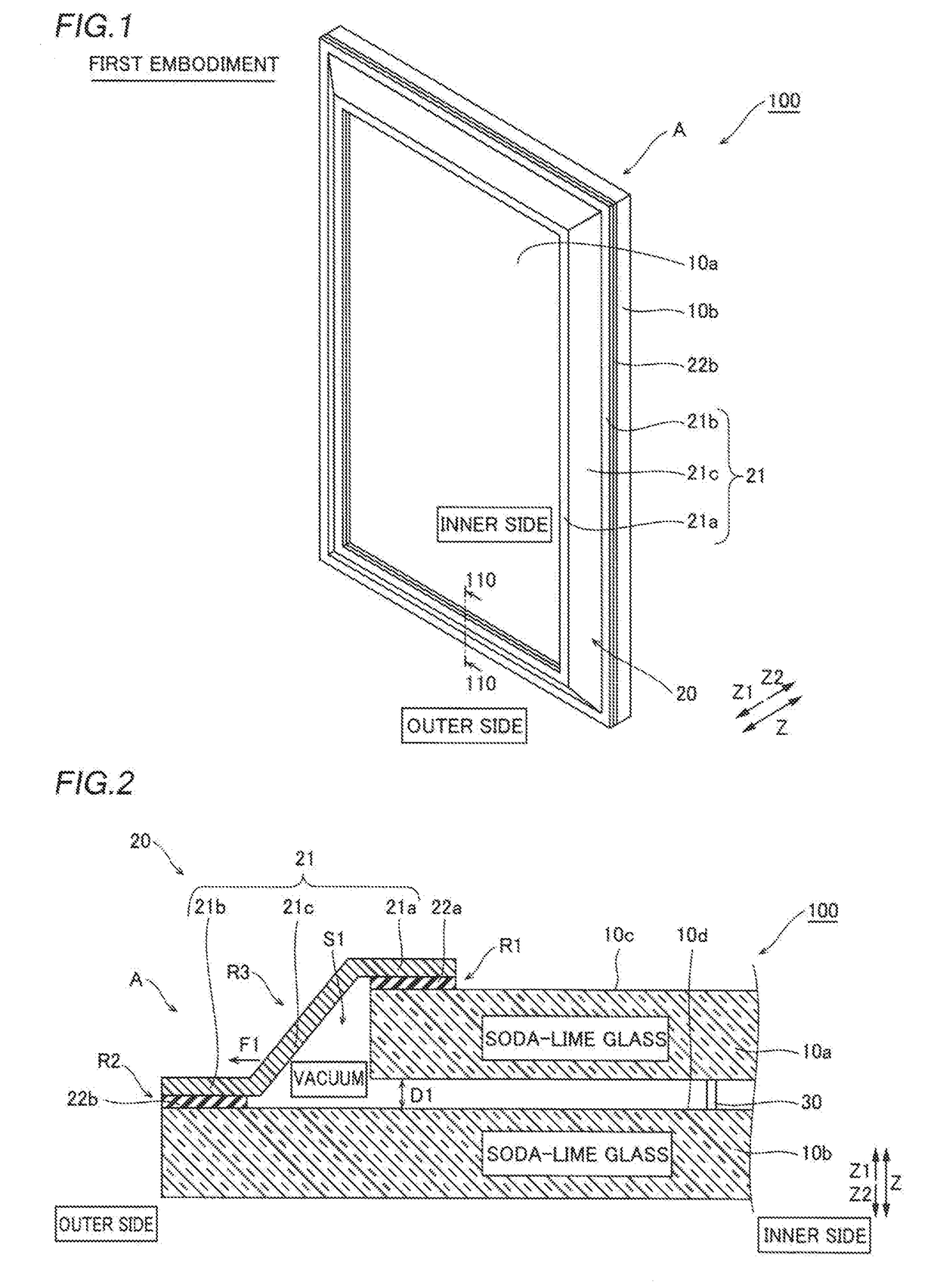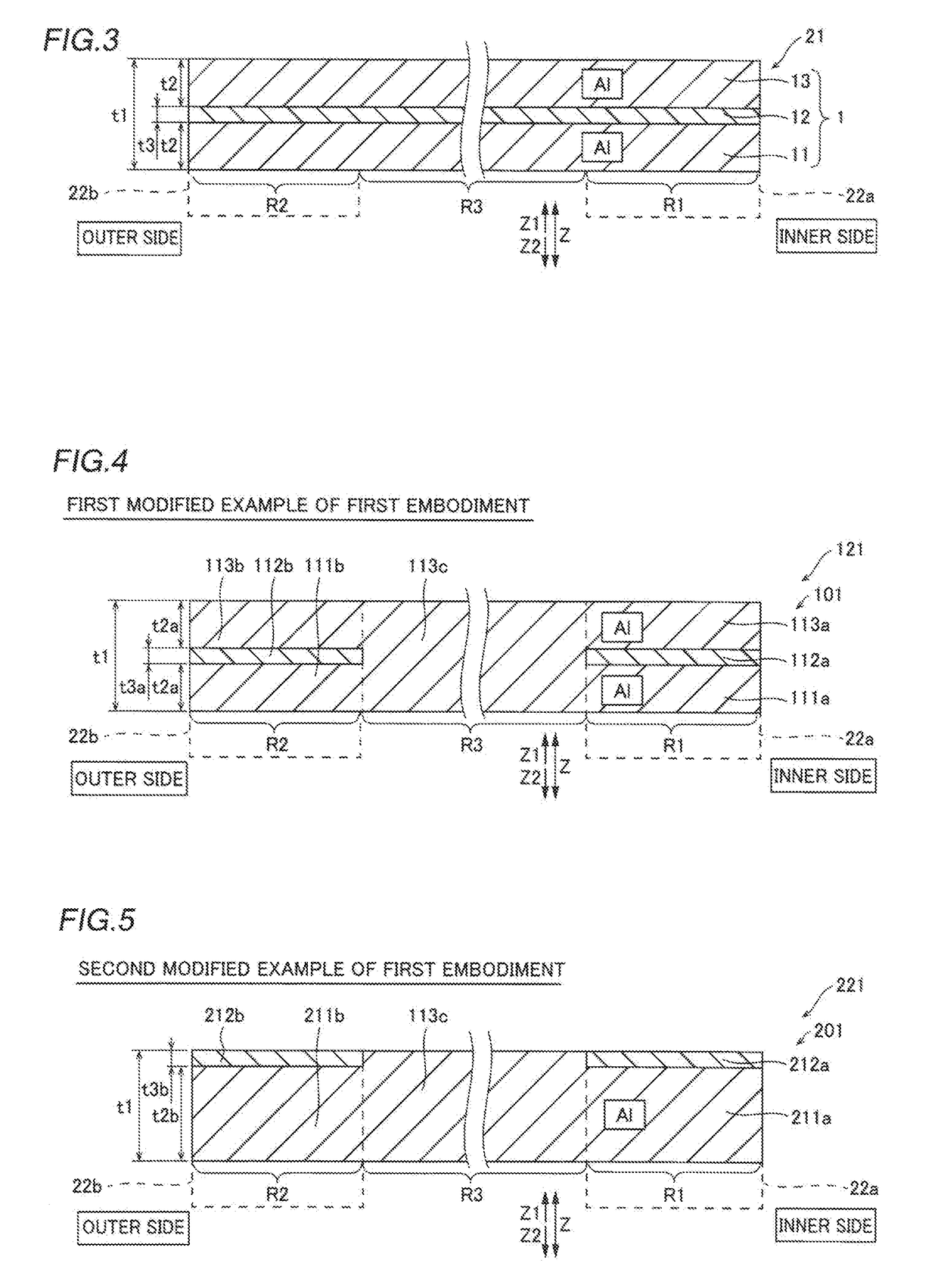Glass bonding material and multilayer glass
a multi-layer glass and glass bonding technology, applied in the direction of building components, metal-working apparatus, construction, etc., can solve the problems of large thermal expansion difference, cracks, breakages, etc., and achieve the effect of suppressing cracks, suppressing peeling of glass bonding materials, and suppressing peeling of glass
- Summary
- Abstract
- Description
- Claims
- Application Information
AI Technical Summary
Benefits of technology
Problems solved by technology
Method used
Image
Examples
first embodiment
[0050]First, the configuration of a vacuum multilayer glass 100 according to a first embodiment of the present invention will be described with reference to FIGS. 1 to 3. Note that the vacuum multilayer glass 100 is an example of the “multilayer glass” according to the present invention.
[0051]The vacuum multilayer glass 100 according to the first embodiment of the present invention is provided with, as shown in FIG. 1 and FIG. 2, two glass plates 10a and 10b arranged so as to face with each other with a predetermined gap S1 therebetween and a sealing member 20 arranged at the sealing part A (peripheral region) provided at the entire circumference of the peripheral portion of the vacuum multilayer glass 100 for sealing the glass plate 10a and the glass plate 10b with the gap S1 therebetween. The length (distance D1) between the glass plate 10a and the glass plate 10b in the thickness direction (Z direction) of the gap S1 is about 200 μm. Also, the sealing member 20 includes an approx...
first modified example of first embodiment
[0094]Next, a first modified example of the first embodiment of the present invention will be described with reference to FIG. 4. In this first modified example of the first embodiment, unlike the first embodiment in which the reinforcing member 21 is made of an overlay type cladding material 1, an embodiment in which core layers 112a and 112b of a reinforcing member 121 are arranged only at positions facing the bonding regions R1 and R2 will be described. The reinforcing member 121 is one example of the “glass bonding material” made of the cladding material 101 according to the present invention.
[0095]As shown in FIG. 4, the reinforcing member 121 according to the first modified example of the first embodiment of the present invention is configured by a cladding material 101 in which a three-layer structure is formed only in the bonding regions R1 and R2 and a single layer structure (no layer structure is formed) is formed in the region other than the bonding regions R1 and R2.
[009...
second modified example of first embodiment
[0105]Next, a second modified example of the first embodiment of the present invention will be described with reference to FIG. 5. In the second modified example of the first embodiment, unlike the first modified example of the first embodiment in which the core layers 112a and 112b are arranged so as to be embedded in the Al-based alloy, a case in which core layers 212a and 212b are exposed on the surface will be described.
[0106]As shown in FIG. 5, the reinforcing member 221 according to the second modified example of the first embodiment of the present invention is configured by a cladding material 201 in which a two-layer structure is formed only in bonding regions R1 and R2 and a single layer structure (no layer structure is formed) is formed in the region other than the bonding regions R1 and R2. Note that the reinforcing member 221 is one example of the “glass bonding material” made of the cladding material 201 according to the present invention.
[0107]Specifically, on the inne...
PUM
| Property | Measurement | Unit |
|---|---|---|
| Young's modulus | aaaaa | aaaaa |
| Young's modulus | aaaaa | aaaaa |
| Young's modulus | aaaaa | aaaaa |
Abstract
Description
Claims
Application Information
 Login to View More
Login to View More - R&D
- Intellectual Property
- Life Sciences
- Materials
- Tech Scout
- Unparalleled Data Quality
- Higher Quality Content
- 60% Fewer Hallucinations
Browse by: Latest US Patents, China's latest patents, Technical Efficacy Thesaurus, Application Domain, Technology Topic, Popular Technical Reports.
© 2025 PatSnap. All rights reserved.Legal|Privacy policy|Modern Slavery Act Transparency Statement|Sitemap|About US| Contact US: help@patsnap.com



